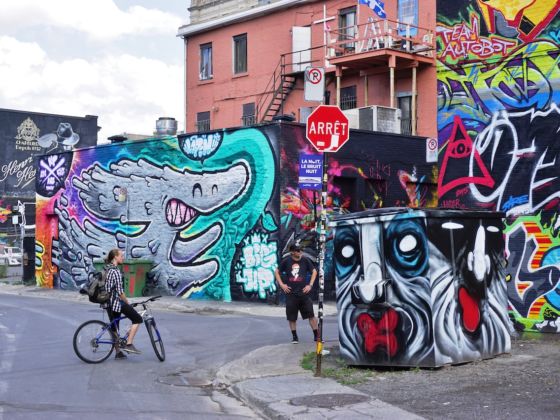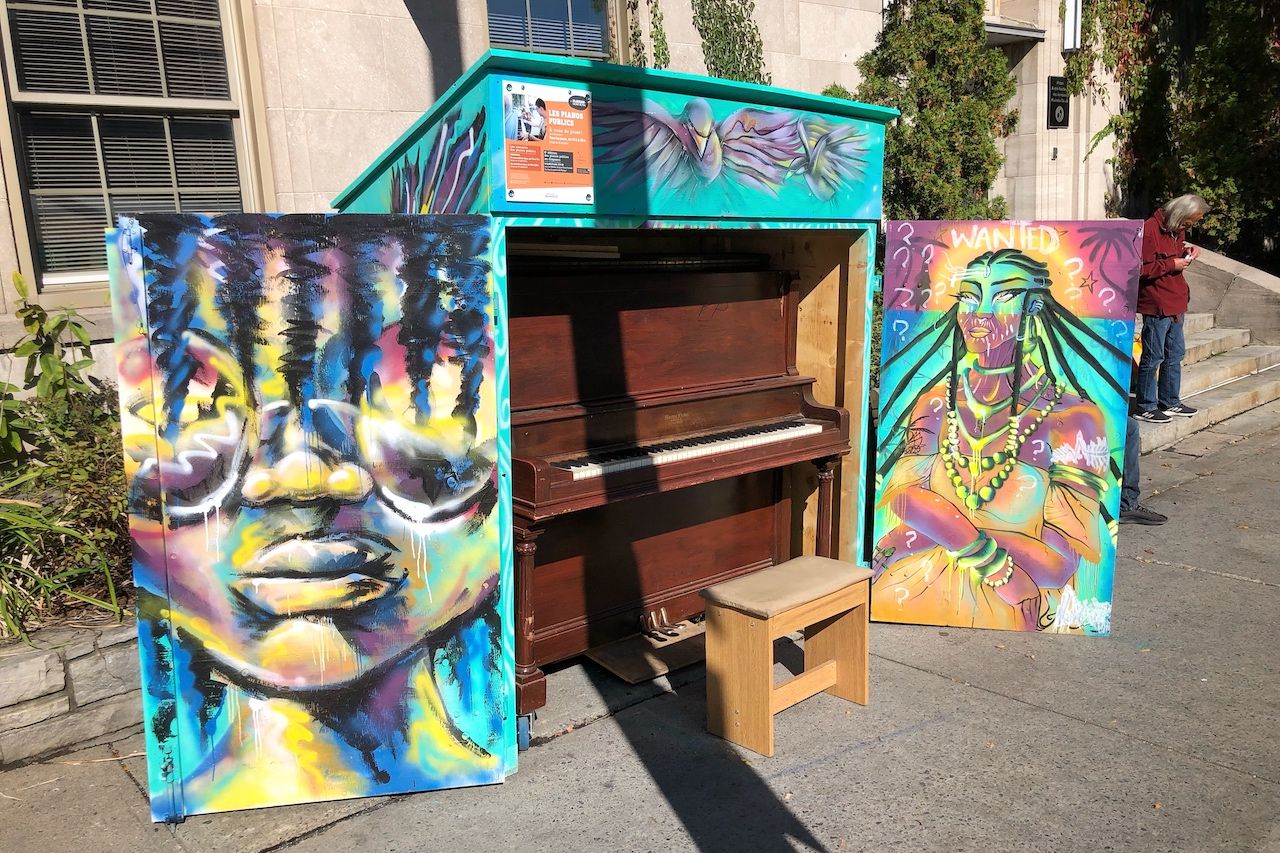Montreal’s Boulevard Saint Laurent is Canada’s most colorful street. In fact, there’s a fair argument to make that it’s the most colorful street among the many street-art-friendly cities in the world (including the pops of color in nearby Toronto).
Full-wall murals, painted over building entrances, and small pieces from the Mile End neighborhood to Chinatown create a two-plus-mile-long art walk. Paintings and paste-ups fill the nooks and crannies between windows and businesses, and there’s street art literally on the streets. Not to mention the street art galleries like Station 16 and plenty of sanctioned tours.


